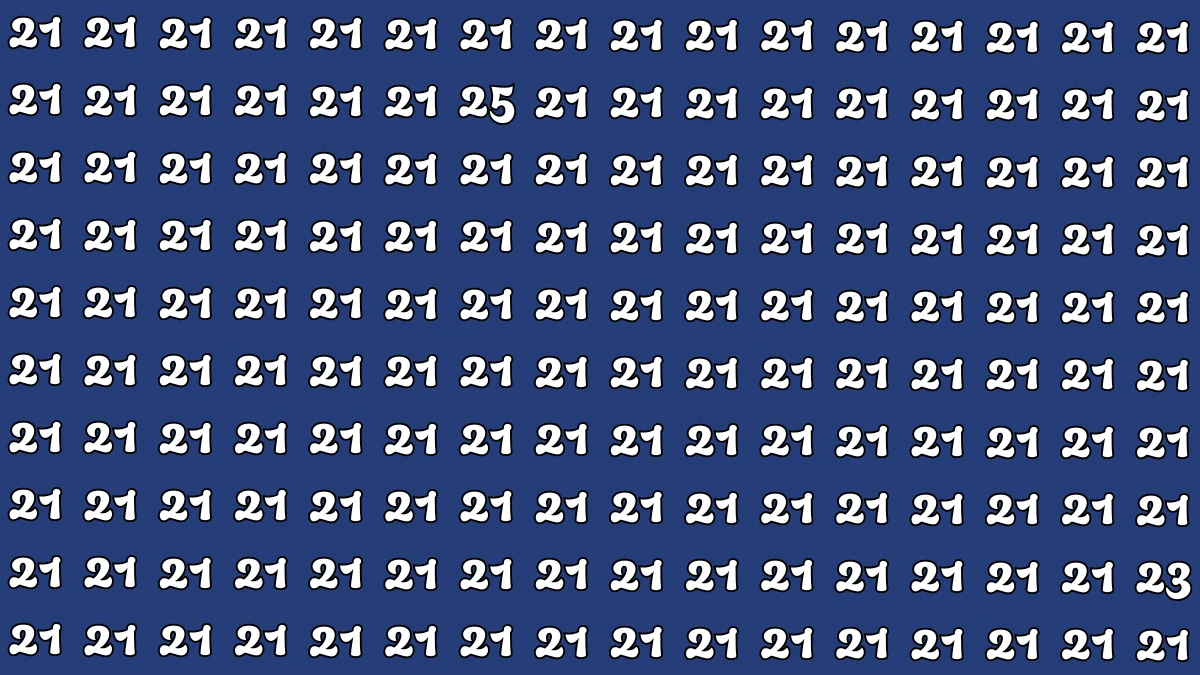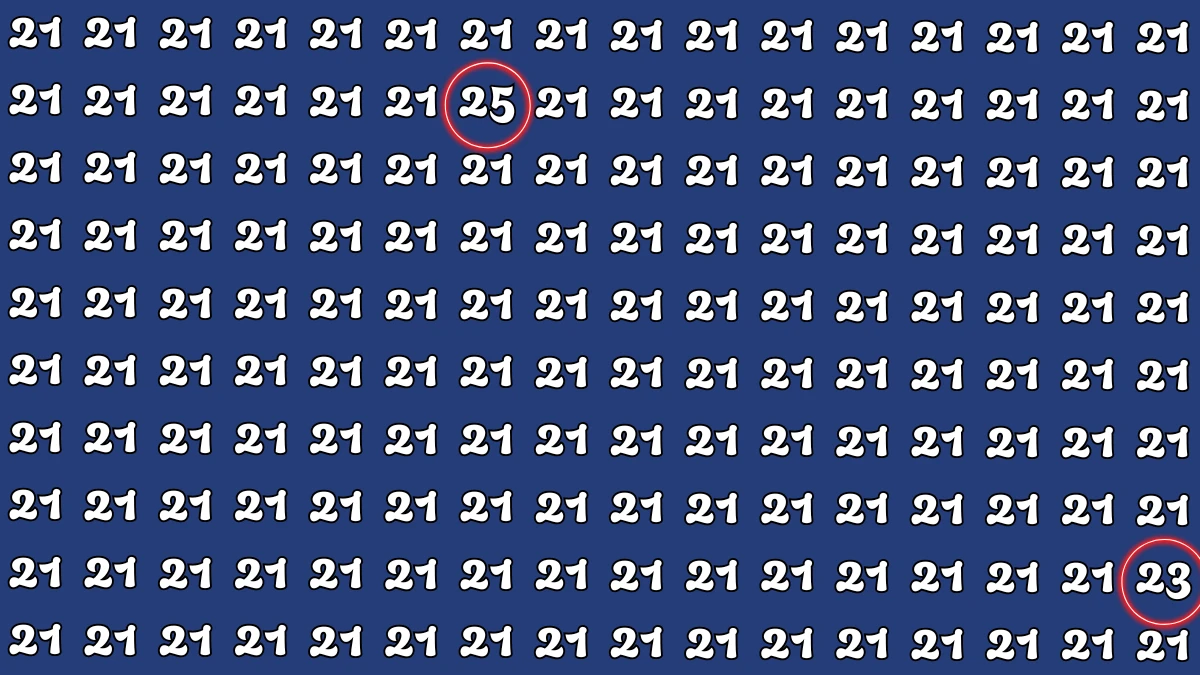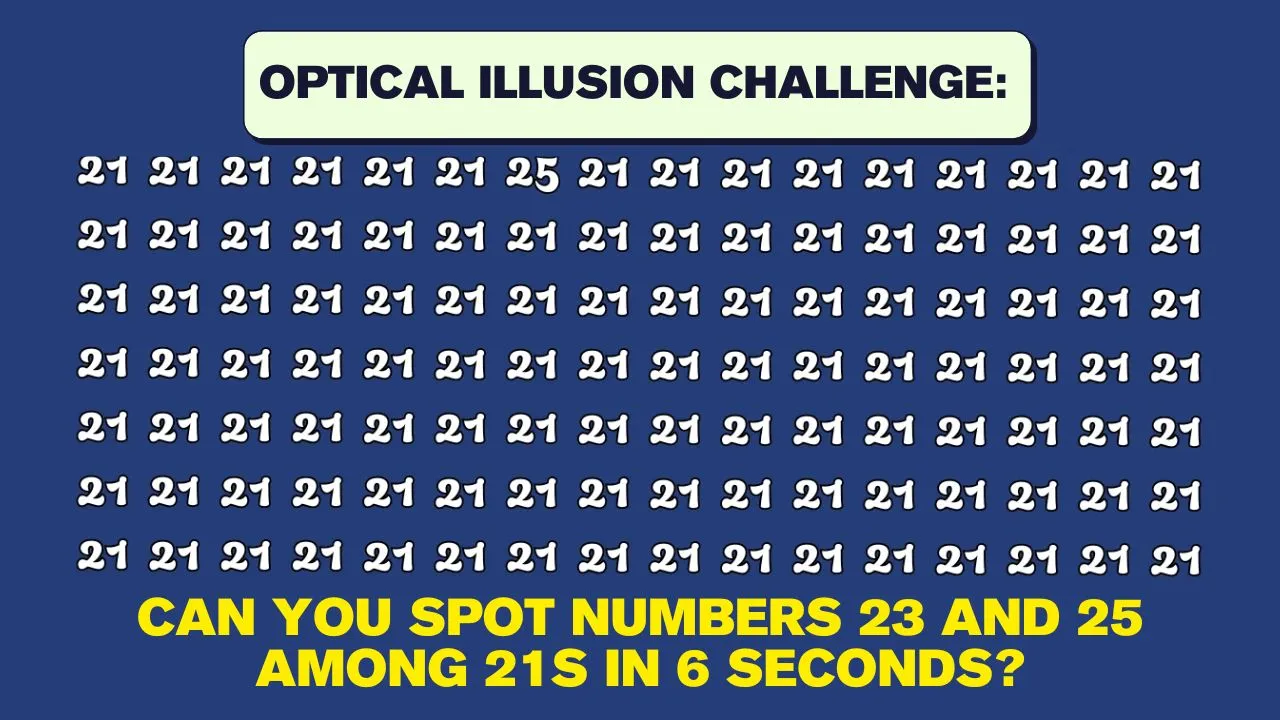Not only are optical illusions entertaining, but they are also an interesting way to assess the brain’s visual processing and detail-oriented abilities. In a recent viral challenge, viewers are asked to identify the numbers 23 and 25 that are concealed among a sea of 21s in just six seconds. Although it may seem simple, this challenge is surprisingly difficult and is a real test of perception and concentration.
Why Does This Illusion Work So Well?
This optical illusion’s simplicity and repetition are what make it so effective. The number 21 is displayed almost entirely in a grid or block of numbers. However, the numbers 23 and 25 are concealed inside that pattern; they are frequently positioned with little spacing or in slightly different fonts, making them difficult to spot at first look.
In order to absorb information more quickly, our brains have a tendency to ignore minor variations when they are exposed to repetitive patterns. The “pattern recognition bias” is a type of cognitive bias in which we overlook minute differences because we anticipate repetition. For this reason, even when they are directly in front of us, numerals like 23 and 25 may evade our attention.

How come the time limit is six seconds?
The 6-second limit increases pressure and intensifies the difficulty of the task. Your brain must scan rapidly and precisely in a limited amount of time, which is challenging when the pattern is thick and almost uniform. A cognitive strain called “visual crowding” results from this, impairing your capacity to accurately distinguish items due to close visual stimulation.
Not only does the timer serve as entertainment, but it also simulates real-world scenarios when we must make snap decisions, such spotting a traffic sign while driving or noticing a minor detail in a paper while under time pressure.
How to Quickly Identify the Hidden Numbers
Here are some pointers if you’re having trouble with this illusion:
- Instead of scanning the image row by row, attempt to examine the entire image at once and allow your eyes to relax. Sometimes what direct focus misses can be seen with peripheral vision.
- Seek out shape differences: Since the numerals 3 and 5 are not visually similar to 1, attempt to find any bulges or curves that contrast with the 1s’ more straight lines.
- Blink or gently defocus: Sometimes letting your eyes relax might help you notice patterns or irregularities that your focused vision would have missed.
What Your Brain Is Telling You
The speed at which you can identify the digits 23 and 25 may reveal something about how your brain interprets visual data. It can be simpler for individuals who are accustomed to solving puzzles or have good visual perception. Your brain is really good at digesting repetitive patterns, which is helpful in many real-life jobs, so it doesn’t indicate anything bad if you struggle.
Solution

More than just a game, this visual illusion is a sophisticated method to assess the brain’s capacity to distinguish patterns under duress. Your brain is getting a good exercise regardless of how long it takes you to figure out the numbers—three seconds or thirty. Try it the next time you encounter one of these visual obstacles. What you miss or what you see may surprise you.

